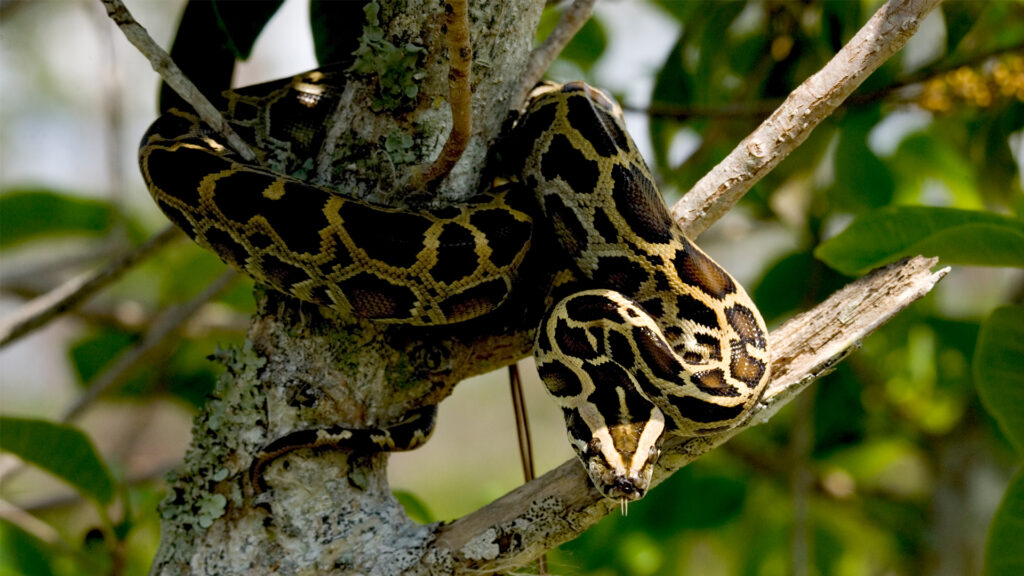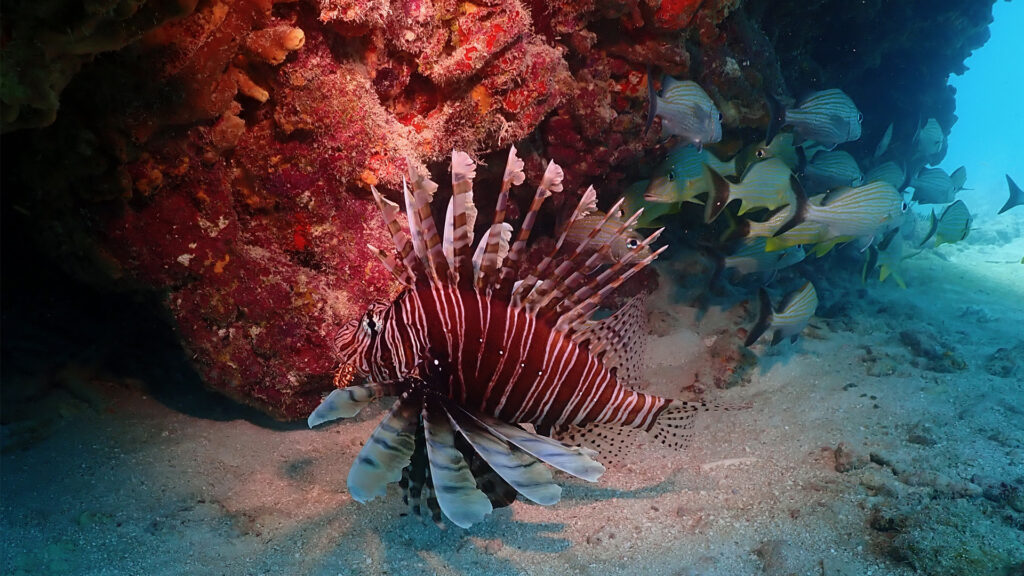By Ed Killer, TCPalm.com
On a sunny Saturday afternoon in late October, an apex predator slithered through the unmowed grass of an East Central Florida canal bank. The 12-foot-long Burmese python soaked in the sun’s rays as it prepared for a post-sundown hunting trip.
Roseate spoonbills, ibis, wood storks, ducks, turtles, alligators, otters, native snakes, marsh rabbits, raccoons and opossums were all potentially on the menu that night. Any unsuspecting animal small enough to fit into the python’s dislocatable jaw was at risk.
But this uninvited transplant — this terror of Florida’s wildlands — made one fatal mistake: It was spotted on the canal bank by a foursome of alligator hunters.
Why is one Burmese python a problem?
Florida alligator hunters finding a python isn’t really newsworthy. It happens occasionally.

Where the python was found, however, should alarm all of us.
T.M. Goodwin Waterfowl Management Area is in southern Brevard County along the Indian River County line. It’s adjacent to the Stick Marsh, Headwaters Lake and only a few miles from Blue Cypress Lake, Lake Kenansville and Garcia Reservoir — all in Indian River County near Fellsmere.
It’s all part of the suite of reservoirs used by the St. Johns River Water Management District to keep the water supply in the 200-mile-long river system and out of the Indian River Lagoon 20 miles away.
I’m sure the python didn’t have a GPS, but it was over 100 miles from the rest of its kind. It did not have a computer tracking chip required for python pet owners, according to the Florida Fish and Wildlife Conservation Commission.
Pythons have overwhelmed the marshes, flatwoods, tree islands, prairies and mangrove swamp ecosystems of the Everglades and Big Cypress throughout Miami-Dade, Monroe and Collier counties. Since the 1980s, pythons can be found at night, warming themselves on the gravel roads atop the levees of South Florida Water Management District canals and marshes.
The ones we can’t find are the problems. They burrow into the limestone substrate of South Florida, get lost in mangrove marshes and cypress swamps, and live in terrain too thick and difficult for people to find them.
How is invasive species problem getting worse?

Pythons are just one small part of Florida’s 500-species invasive problem. If you live in South Florida, you’ve become accustomed to living alongside iguanas, Agama lizards, Egyptian geese, Muscovy ducks, Nile monitor lizards, cattle egrets, giant African snails, red imported fire ants, bufo toads, wild hogs and tegu lizards — to name a few of our terrestrial pests.
Invasive species cost Floridians $500 million a year. These pests have spread across 1.7 million acres. Pythons, lionfish, Mayan cichlids and monitor lizards eat or outcompete many native animals, including endangered wildlife, according to the Fish & Wildlife Foundation of Florida. A fishing guide told me that tropical nonnative species fish such as peacock bass and clown knifefish are starting to be caught in Lake Okeechobee.
Controlling their spread has been a losing battle. Python and lionfish removal programs operated by the FWC and SFWMD are trying to do their part. Removal programs and roundup tournaments have removed about 25,000 pythons since 2000.
Unfortunately, there are still over 100,000 in the wild and some estimates are as high as 300,000. The FWC’s Lionfish Roundup this year harvested over 30,000 lionfish. Only trouble is, that was a drop in the bucket.
How can winter help with invasives?
Florida is overdue for is a real bona fide cold snap. The last one of any real substance we had was in January 2010. On the Treasure Coast, temperatures didn’t rise above 50 degrees for 10 days. Colder temperatures slid south along the west side of Lake Okeechobee all the way to the Florida Keys.
The cold knocked back more than a few nonnatives, but whacked some natives as well. Snook, tripletail, lookdowns, mojarra, gafftopsail catfish and Goliath grouper living in the relatively shallow waters of the Indian River Lagoon and its connected rivers took it on the chin.
The snap revealed some secrets we didn’t know. A 52-pound pacu, a berry-eating fish native to the Amazon River, floated up dead near River Park on Prima Vista Boulevard. If it had been caught on hook and line, it would have eclipsed the IGFA World Record for pacu by 15 pounds.
At Lake Ida, anglers struggled to catch a single bass, dozens of iguanas lay dead on docks and dead clown knifefish floated in the water.
How can sharks, bobcats and panthers help us?
We can’t do this alone. These invasive species may seem like a coordinated effort, but they’re not. Still, we need more help from our native wildlife.
Sharks, goliath grouper and cubera snapper need to start seeing lionfish as a food source. Last year, a bobcat found a python nest and raided its eggs. A couple times a year, random outdoorsmen share videos of alligators eating pythons on social media. But these interactions need to happen more frequently.
The research community is also involved in this overwhelming battle. A recent study University of Florida researchers published in the scientific journal Ecosphere identifies potential pests on their way and their potential impact.
Are invasive species here to stay?

The days of thinking we can eradicate these species are probably long gone. But we’re not ready to live in harmony alongside many of them yet. The battles will continue. Falling iguana weather alerts will still be issued by TV meteorologists.
We need to hope many of these unsavory critters remain contained to the southern regions. Or else I’ve got some bad news for the small mammals that live among us.
Ed Killer is a columnist with TCPalm. This opinion piece was originally published by TCPalm.com/Treasure Coast Newspapers, which is a media partner of The Invading Sea.
If you are interested in submitting an opinion piece to The Invading Sea, email Editor Nathan Crabbe at ncrabbe@fau.edu. Sign up for The Invading Sea newsletter by visiting here.



